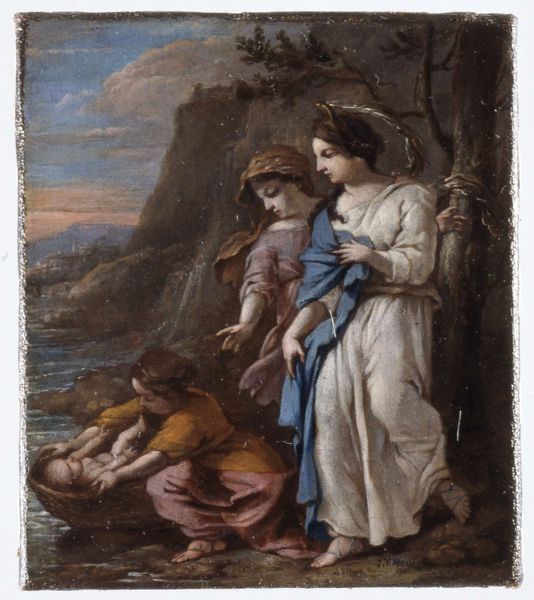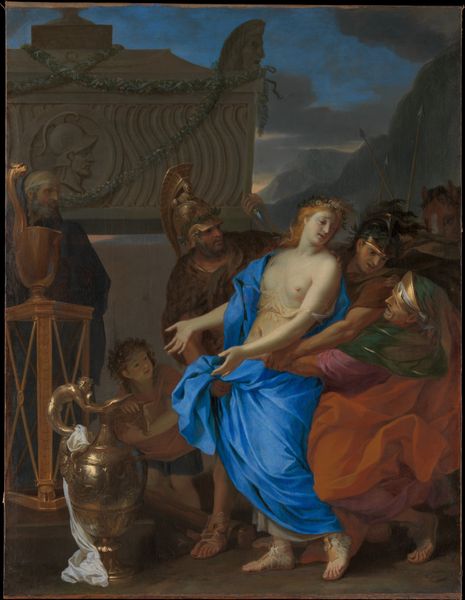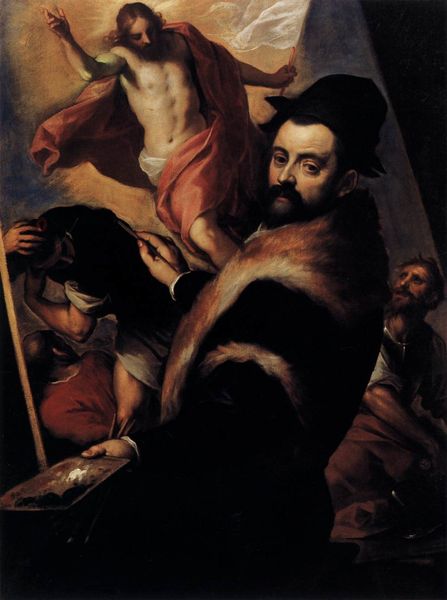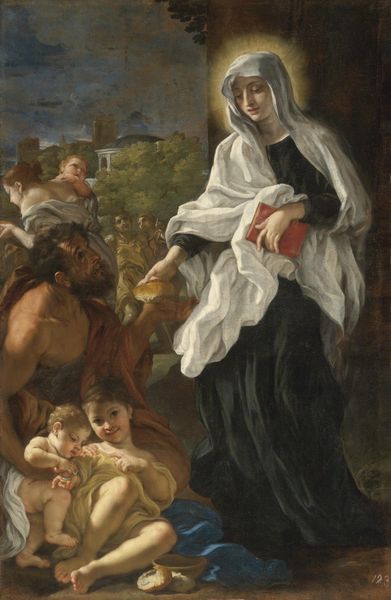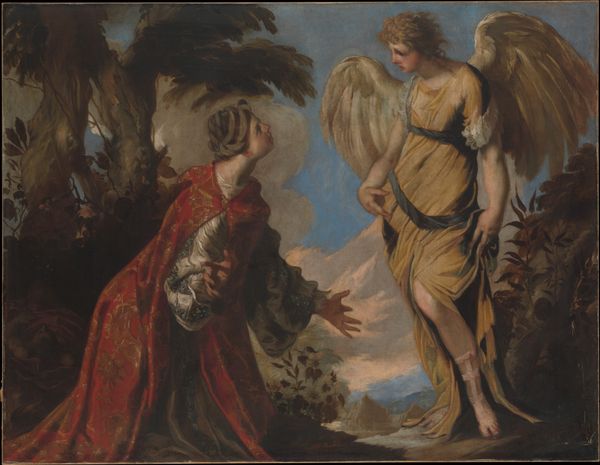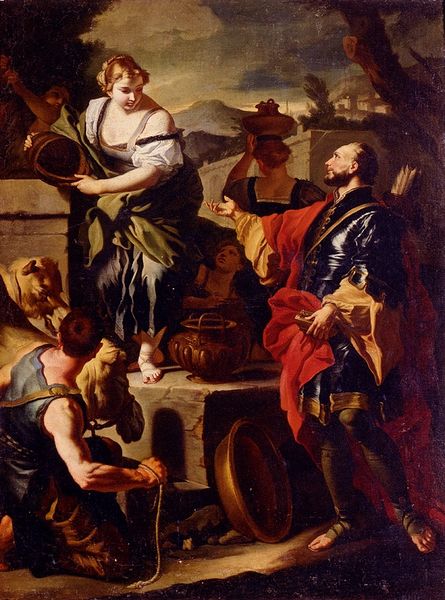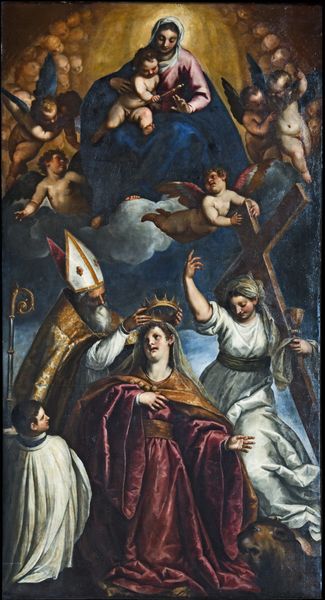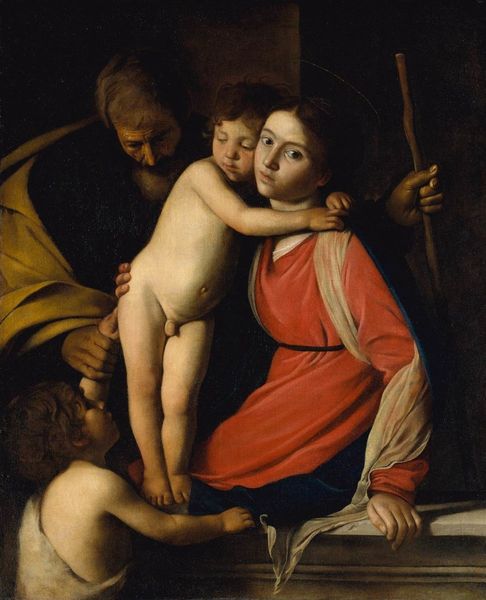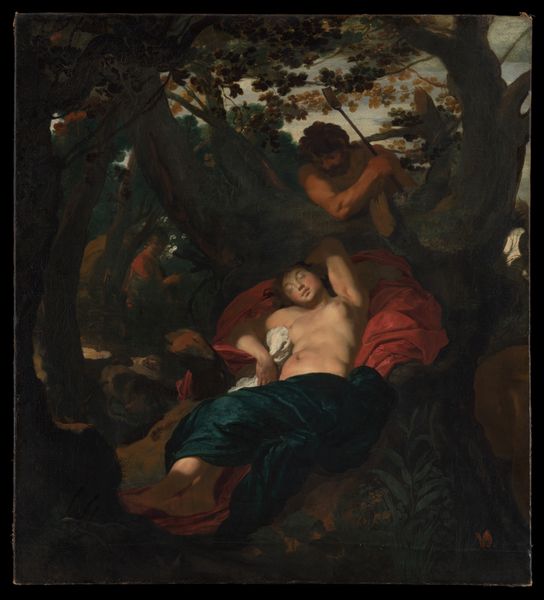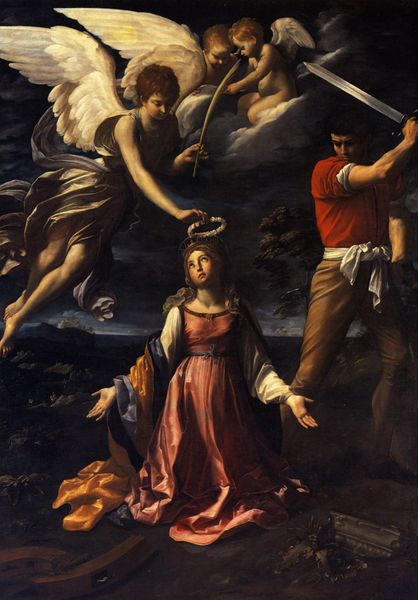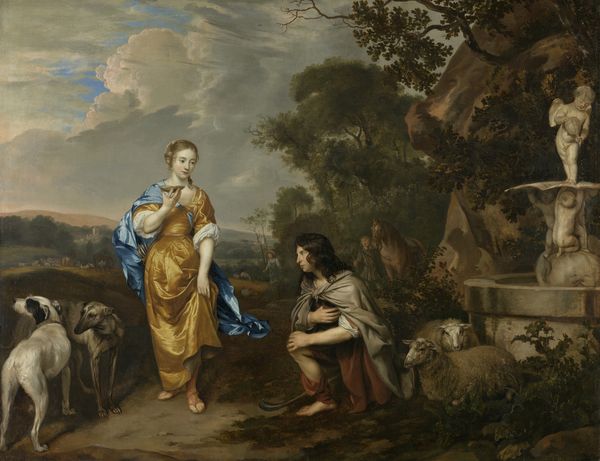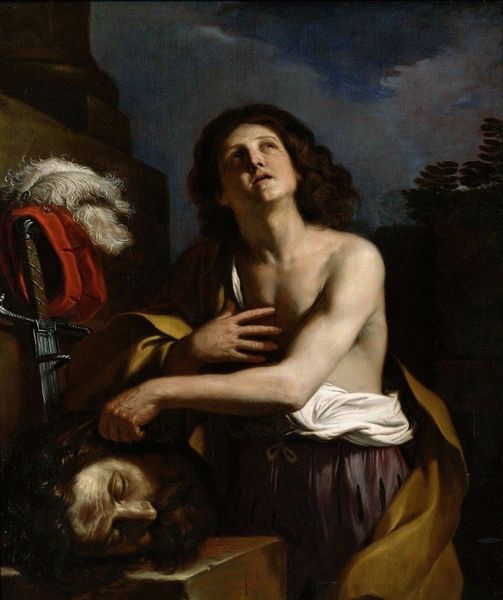
painting, oil-paint
#
portrait
#
allegory
#
narrative-art
#
baroque
#
painting
#
oil-paint
#
figuration
#
chiaroscuro
#
history-painting
#
sword
#
erotic-art
Dimensions: 78 1/2 x 57 1/2 in. (199.4 x 146.1 cm)
Copyright: Public Domain
Curator: This painting, crafted between 1635 and 1645 by Massimo Stanzione, presents a rather composed "Judith with the Head of Holofernes". Editor: The stillness is what strikes me. Despite the obvious violence of the subject matter, there's a pervasive calmness—almost a theatrical staging, emphasized by the deep chiaroscuro. Curator: Exactly. We see Stanzione engaging with themes common in the Baroque period, history painting that is also interested in allegory and a more direct figuration of female power. It’s compelling to consider Judith not simply as a biblical figure, but through the lens of early feminist interpretations. Editor: I’m also thinking about the materials themselves. The weight of the oil paint applied to render Judith’s garments and the folds of the drapery feel so considered. Look at the metallic sheen on the sword, its stark contrast against the fabric—Stanzione is forcing us to engage with his skilled craft and how he carefully handled his tools. It adds another layer to how this narrative unfolds and, ultimately, is consumed by the viewer. Curator: The presence of the maid, often overlooked, provides another access point. I am interested in the narrative between women here. In that context, can we read their alliance against patriarchal oppression, their shared purpose of delivering justice. Editor: It's about the collaborative act of making a statement, then. Even the servant’s presence contributes to how we grasp that physical manifestation of violence—her role feels crucial. We cannot understand it otherwise, as it changes our reading of gendered exploitation and rebellion. Curator: Ultimately, this Stanzione piece is about reclaiming power dynamics. It's very indicative of baroque period painting. Editor: Agreed. Its power resides both in the final composition and, fundamentally, the skilled hands of those who created it. We witness in both the means and the making, a complex depiction.
Comments
No comments
Be the first to comment and join the conversation on the ultimate creative platform.
